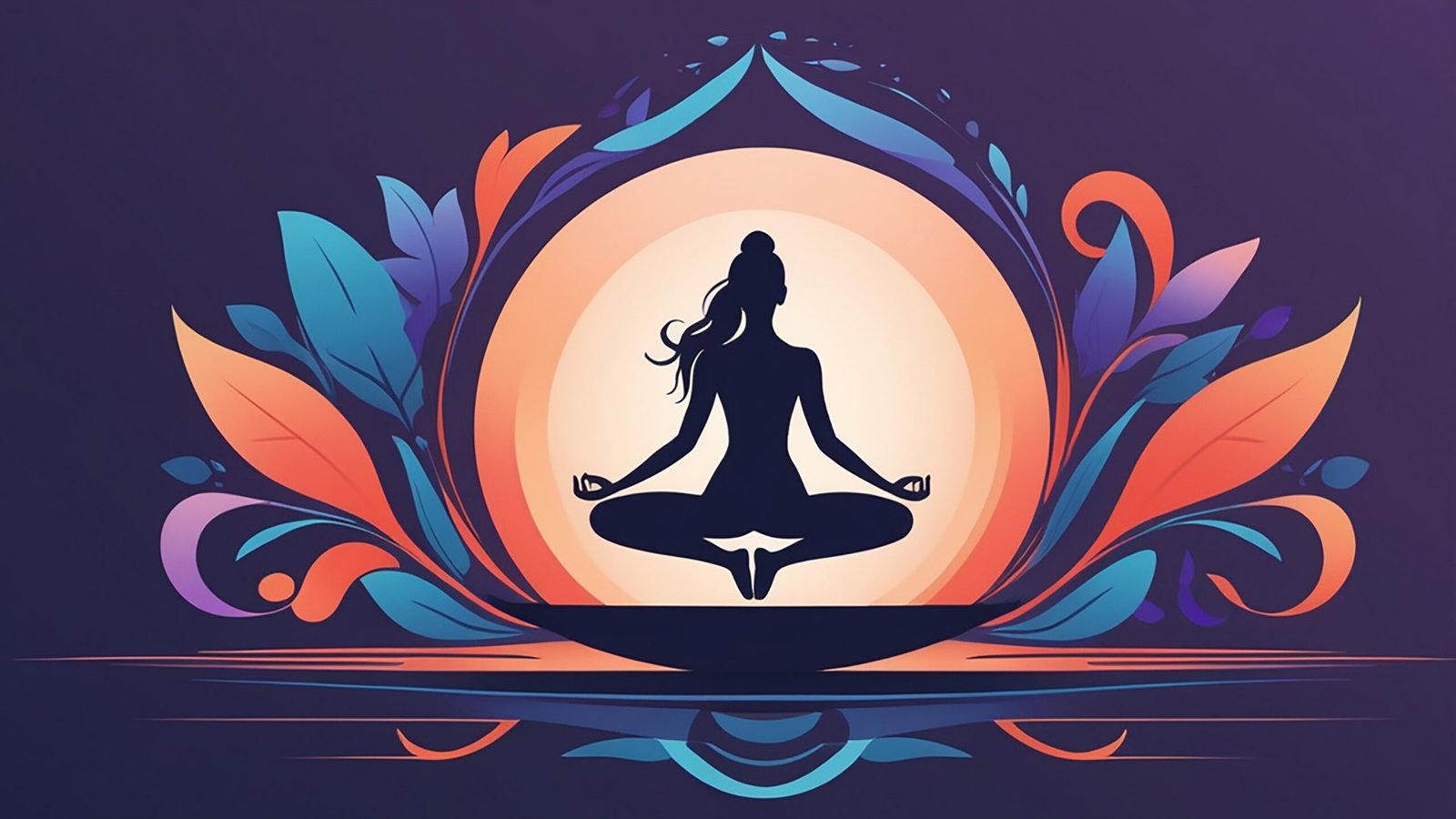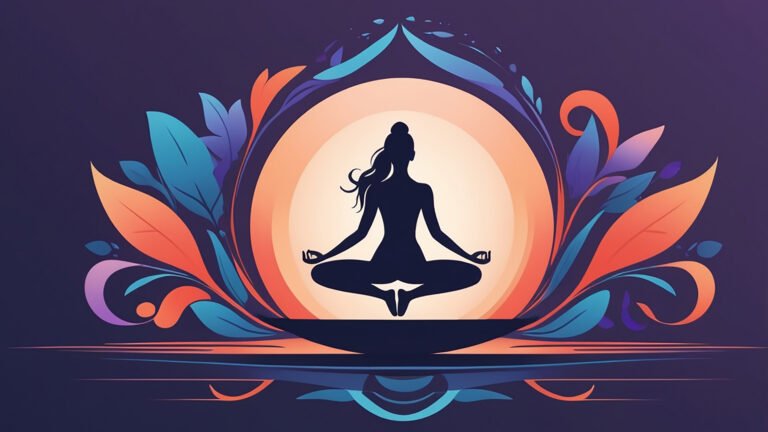— Introduction :
In the science of Pranayama, where each breath is a conscious offering to the divine, Pranav Mudra (प्रणव मुद्रा) aslo called as ‘Vishnu Mudra’ (विष्णु मुद्रा) in other scriptural texts, just as Lord Vishnu sustains the cosmos, Vishnu Mudra sustains the inner universe of prana, keeping the breath centered, the energy balanced, and the mind calm. This Mudra is not a symbolic or meditative gesture, but a functional hand position specifically used to control the nostrils during Anulom Vilom or Nadi Shodhana Pranayama. The term “Pranav” refers to the sacred sound Om (ॐ), that’s why it is also called as ‘Om Mudra’ (ॐ मुद्रा) — the primordial vibration. By extension, this Mudra becomes the gateway for guiding the pranic flow through alternate nostril breathing, preparing the subtle body for purification and inner stillness.
Although not always named explicitly in ancient texts, this Mudra has become a cornerstone in modern yogic breathing practices. It enables smooth nostril switching, keeps the breath intentional, and aligns physical gesture with pranic discipline.
— Step-by-step Instructions :
Sit in a stable meditative posture like Padmasana, Sukhasana, or Vajrasana.
Bring your right hand up near your nose.
Gently fold the index and middle fingers inward so that they touch the palm.
Keep the thumb, ring finger, and little finger extended.
Use the thumb to close the right nostril and the ring or little finger to close the left nostril, alternating as needed.
Rest your left hand on the knee in Gyan Mudra or Chin Mudra.
Begin Anulom Vilom Pranayama, using Pranav Mudra to guide the nostril control rhythmically.
🔊 The key is gentle pressure and smooth switching between nostrils without strain.
— Meaning & Symbolism :
While this Mudra is primarily functional, its name — Pranav — ties it deeply to the spiritual essence of Om. In Yogic philosophy, Om (Pranava) is the sound form of consciousness. The act of controlling the breath using this Mudra symbolizes the practitioner’s command over prana, aligning body, breath, and mind with the universal vibration.
It represents:
Mastery over pranic duality (Ida and Pingala)
A bridge between outer breath and inner silence
An invocation of the discipline of Yoga, where even the hand becomes a tool for awakening
— The Science of Pranav Mudra:
Mudra enhances the efficacy of alternate nostril breathing by providing precision and control. Here’s how it works:
🔹 Neuromuscular Precision
-
Creates a stable hand shape that allows easy manipulation of nostrils
-
Reduces muscular fatigue compared to random hand positioning
🔹 Pranic Flow Regulation
-
Ensures smooth activation of Ida Nadi (left nostril) and Pingala Nadi (right nostril)
-
Facilitates equal and conscious inhalation and exhalation
🔹 Mental Focus
-
Acts as a mudra anchor that keeps the practitioner engaged in the breath cycle
-
Coordinates hand movement with mental awareness, building concentration (Dharana)
By creating this rhythmic control, Pranav Mudra helps awaken the Sushumna Nadi, the central energy channel, through balanced breathing.
— Benefits of Pranav Mudra:
Physical Benefits:
Allows accurate nostril switching during Anulom Vilom
Reduces shoulder and wrist strain with ergonomic finger positioning
Improves lung efficiency by enabling full and equal breathing
Mental & Emotional Benefits:
Increases breath awareness and mental focus
Anchors the mind to the practice, reducing mental distractions
Enhances discipline and mind-body coordination
Spiritual Benefits:
Prepares the pranic field for deep meditation and inner absorption
Aligns breath with the sacred rhythm of Om
Supports the process of Nadi Shodhana (energy purification)
— When and How Long to Practice :
- Use Pranav Mudra only during Pranayama sessions that involve nostril control (e.g., Anulom Vilom, Nadi Shodhana).
- Practice for 5 to 20 minutes based on your Pranayama schedule.
- Ideal time: Brahma Muhurta (4–6 AM) or in the evening before meditation.
- Should be practiced on an empty stomach and in a quiet, well-ventilated space.
— Chakra Activation and Elemental Balance:
While Pranav Mudra itself is not directly meditative, it aids in balancing the energy flow between Ida and Pingala Nadis, which are associated with:
Ida Nadi – linked to the Chandra (moon) energy and the left side of the body, calming, cooling, connected to Ajna Chakra.
Pingala Nadi – linked to the Surya (sun) energy and the right side, energizing and warming.
By balancing these, Pranav Mudra indirectly activates the Sushumna Nadi, preparing for chakra alignment, especially the Ajna (third eye) and Sahasrara (crown) centers.
Elementally, it harmonizes:
Vayu (air) through controlled breathing
Agni (fire) through thumb usage, representing transformation
— Precautions to Keep in Mind :
Do not apply force while pressing the nostrils — keep it gentle and rhythmic.
If your hand or shoulder feels strained, support the elbow with the other hand or a cushion.
Avoid practicing when suffering from cold, nasal congestion, or severe migraines.
Ensure fingers are clean and relaxed to maintain sacredness and comfort.
— Wrapping Up :
Pranav Mudra is a gesture of discipline, precision, and breath mastery. It may appear simple, but it plays a pivotal role in the success of Anulom Vilom and other nostril-based Pranayama practices. As the right hand forms this Mudra, the breath begins to flow with intention. In this sacred act, duality dissolves, and the practitioner is drawn inward — toward silence, stillness, and the subtle resonance of Om.


